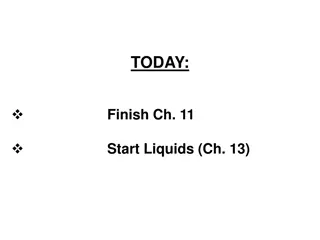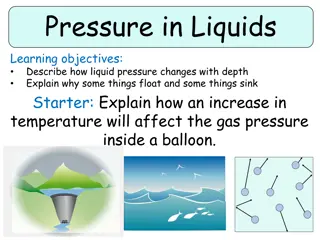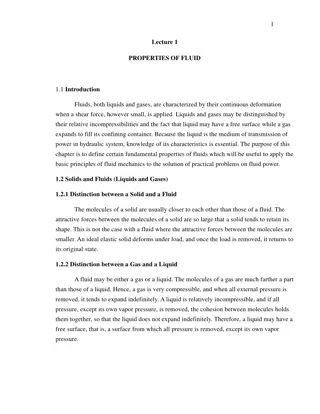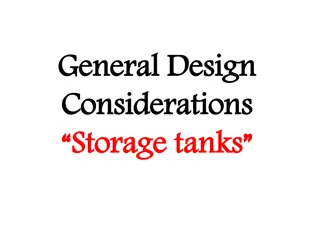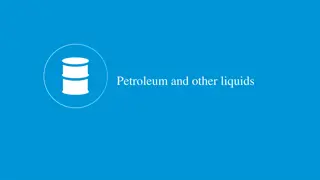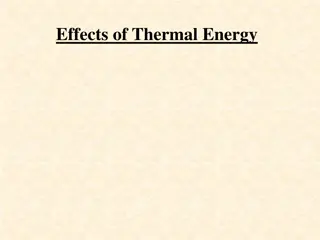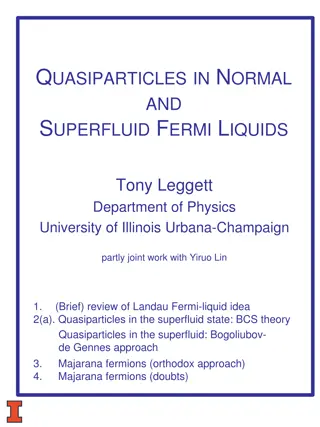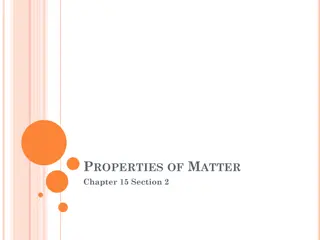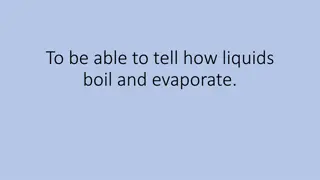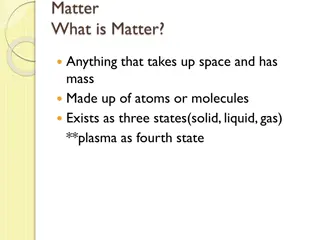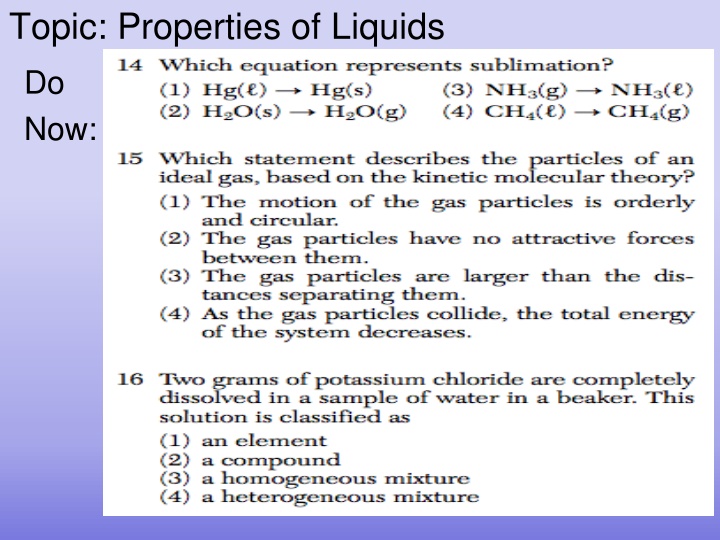
Properties of Liquids: Viscosity, Surface Tension & More
Explore the intriguing properties of liquids such as definite volume, viscosity, and surface tension. Learn how varying forces affect flow rates and surface tension in liquids like water, glycerol, and engine oil. Discover the key characteristics that define liquids and impact their behavior, from resistance to flow to the ability to be compressed. Delve into the unique properties that differentiate liquids from gases and solids, gaining insights into their essential role in everyday phenomena.
Download Presentation

Please find below an Image/Link to download the presentation.
The content on the website is provided AS IS for your information and personal use only. It may not be sold, licensed, or shared on other websites without obtaining consent from the author. If you encounter any issues during the download, it is possible that the publisher has removed the file from their server.
You are allowed to download the files provided on this website for personal or commercial use, subject to the condition that they are used lawfully. All files are the property of their respective owners.
The content on the website is provided AS IS for your information and personal use only. It may not be sold, licensed, or shared on other websites without obtaining consent from the author.
E N D
Presentation Transcript
Topic: Properties of Liquids Do Now:
Properties of Liquids 1. Definite volume 2. Indefinite shape 3. Particles close together, but can move little bit 1. Liquids can flow 4. Density liquids much greater than gases 5. Liquids can be compressed but change in volume is only a small amount & requires enormous pressure 6. Have viscosity
Viscosity Viscosity = resistance to flow Depends on: strength of forces between the liquid molecules Honey has stronger forces between its molecules compared to water; flows slower Temperature If you heat up the honey, it will flow quicker
Where does the marble drop fastest? water Slowest? glycerol Which substance has the greatest viscosity? glycerol Which substance has the strongest forces between its molecules?glycerol See demo (slide 10 of 13)
FYI: ENGINE OIL engine oil prevents direct metal to metal contact thin film oil on surfaces prevents metal from flaking if oil too thick, won t circulate at low temps if oil too thin, will lose film strength at high temps
Properties of Liquids 1. Definite volume 2. Indefinite shape 3. Particles close together, but can move little bit 1. Liquids can flow 4. Density liquids much greater than gases 5. Liquids can be compressed but change in volume is only a small amount & requires enormous pressure 6. Have viscosity 7. Surface tension
Surface Tension DEMO At the surface of a liquid, there are no liquid molecules above, so there is an imbalance of forces between the molecules Surface tension is the amount of energy need to increase the surface area Thus the next attractive forces pull the liquid inward
The stronger the forces between liquid molecules, the higher the surface tension Which has greater surface tension? Liquid Hg Liquid H2O Has stronger forces between it s molecules = greater surface tension
Why use Hot Water when washing dishes? Increasing the temp. decreases the surface tension meaning water can spread out = better wetting agent But if you use soap (it s a surfactant, meaning it decreases the surface tension) so you don t need the hot water DON T COPY
Don't touch the tent! DON T COPY Common tent materials are somewhat rainproof in that the surface tension of water will bridge the pores in the finely woven material. But if you touch the tent material with your finger, you break the surface tension and the rain will drip through.
Properties of Liquids 1. Definite volume 2. Indefinite shape 3. Particles close together, but can move little bit 1. Liquids can flow 4. Density liquids much greater than gases 5. Liquids can be compressed but change in volume is only a small amount & requires enormous pressure 6. Have viscosity 7. Surface tension 8. Capillary Action
Capillary Action Capillary Action = Attractive force between the liquid and the wall of the container. If the force between the container and liquid is greater than the forces between the liquid molecules, the liquid will move up the tube forming a concave meniscus Force(Hg-glass) Force(Hg-Hg) Force(H2O-glass) Force(H2O- H2O)





